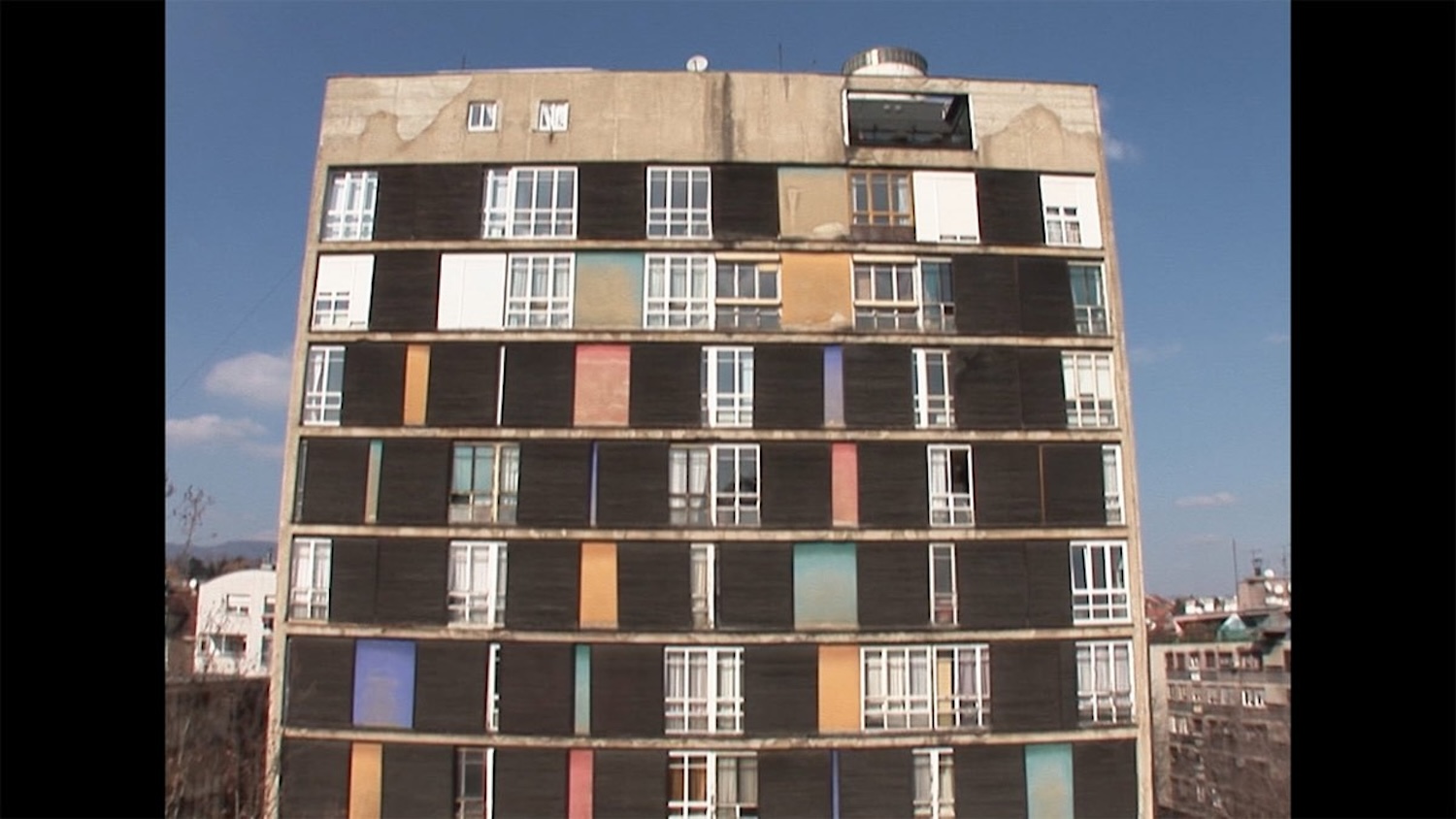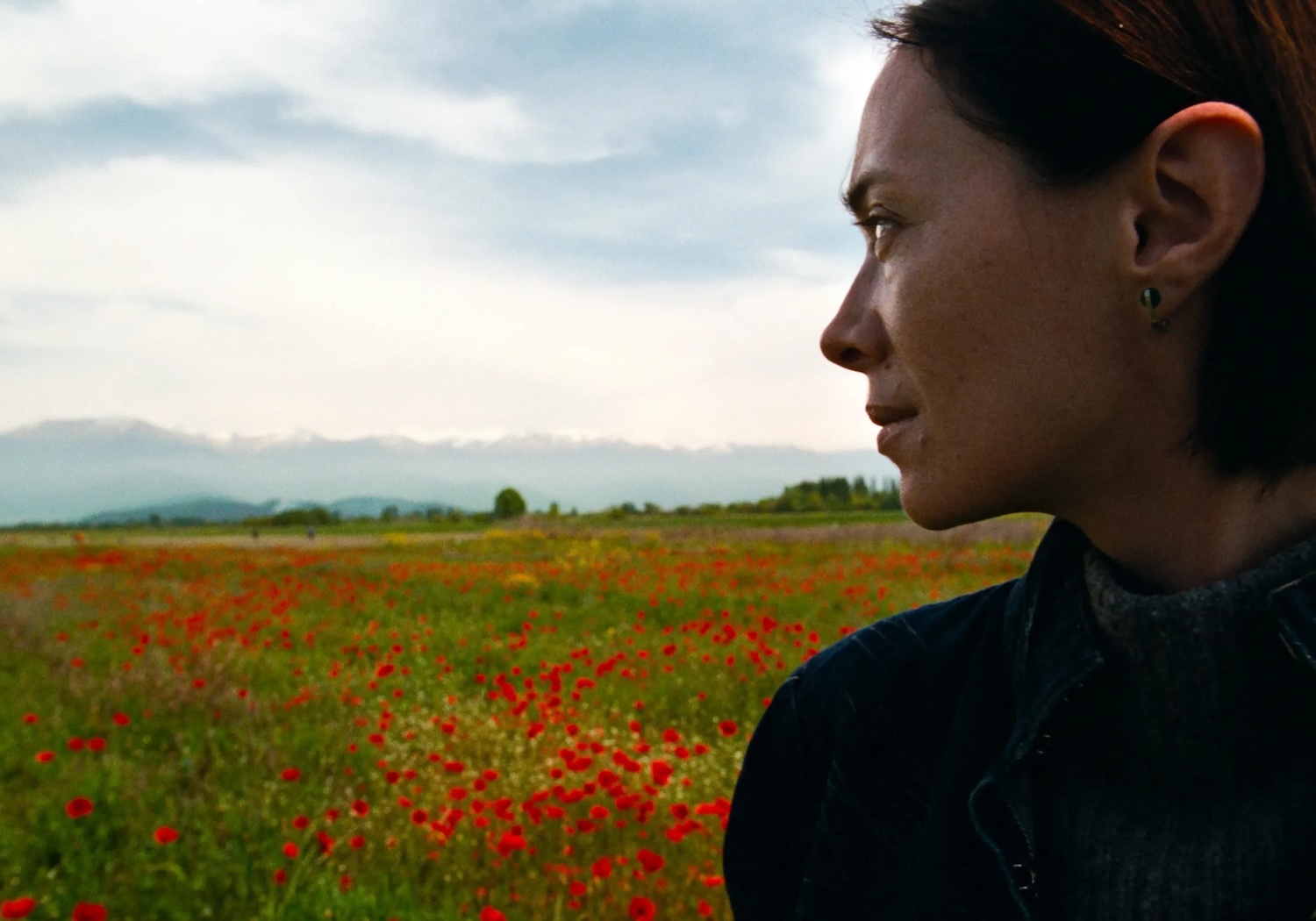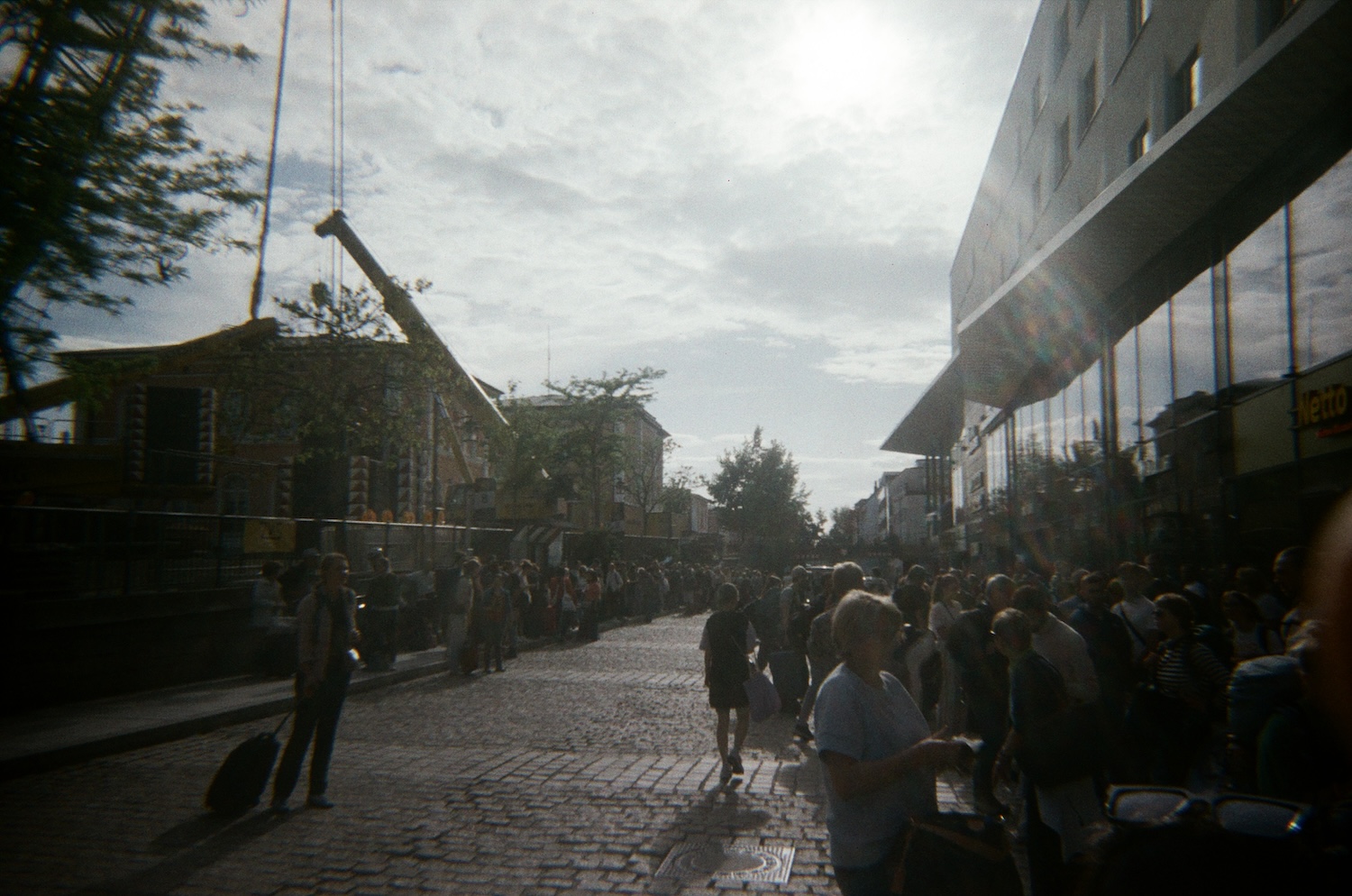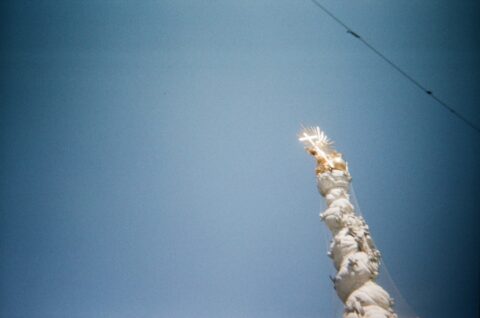This is certainly not news to anyone who has been to Linz before, but the Wiener Schnitzel in the Biergarten at Stiegl-Kolsterhoff is absolutely divine. The location feels like something out of an alpine fairytale, with sunlight streaming through the trees, tables and chairs spreading out in all directions. The breaded pork, doused in lemon and garnished with cranberries, is simultaneously sweet and savoury, probably my highlight of the entire trip.
But my last day of films didn’t disappoint either, with a pair of works that are completely different in every shape of form; one evoking the jazzy modernism and bright colours of Piet Mondrian, the other reproducing dark and dense Caravaggio-esque images. This extreme contrast is Crossing Europe in a nutshell.

A Model of Cinematic Compression
Playing in the Architecture and Society section, exploring the intersection between buildings and society, Vitić Dances (Boris Bakal, 2023) is a fascinating examination of the millions of decisions — and subsequent consequences — that go into the construction and maintenance of public housing projects.
The project in question is the Vitić Skyscraper in Zagreb, conceived in the late 50s and finished in the early 60s. It was built to house employees of the National Bank of Yugoslavia. With its use of bright colours and non-uniform design, Ivan Vitić’s masterpiece looks like a huge 3D Mondrian painting, a truly striking landmark right in the heart of Zagreb. The problem that the locals have faced, however, is that numerous deficiencies were identified during construction, but the Yugoslavian government ignored them. This means that, to paraphrase one resident, if everyone was to sneeze at the same time, the entire building could collapse.
Both director, collaborator and activist, Bakal wants the building to be restored. He is right in the thick of things, organising concerts on the top of the roof and getting deep into long and sustained housing association meetings that show off the intransigence of the older generation as well as their quick wit. With an almost encyclopedic exploration of the nuances of restoration and governmental incompetence, bureaucratic hurdles and outright corruption, efforts to restore the building become a metaphor for a nation, perhaps the region at large.
This project was filmed over the course of 20 years, compressing 14,000 hours of material — switching between video and digital footage, drone shots, handheld and TV reports — into a mere 90-minute work. In the Q&A afterwards, Bakal explained that he created five different versions of the film, all with different throughlines. One was more political. The other reveals a daughter. This version, like the renovation of the building itself, is itself a compromise between different visions. Even if the form, by its very nature, cannot be perfected, this fleet work still represents a fantastic model of how to compress years of material into an easily digestible cinematic form.
Watching this film, I thought of the iconic Hotel Jugoslavija in Belgrade, which was once the most famous hotel in the whole of Yugoslavia, but was recently destroyed instead of being properly renovated. The Socialist Regime, despite its manifold flaws, laid host to a variety of fascinating architectural quirks and ideas. It’s certainly worth cherishing, so people don’t forget their past.

A Hat on a Hat on a Hat
I started the festival with a Georgian film that features live footage of a c-section, so it only makes sense that I should end it with a Georgian film that features live footage of a natural birth. Shot from a birds-eye-perspective, the subject splayed out like in Gustave Courbet’s Origins of The World (1866) as the baby emerges from her vagina, birth is seen less as a miracle than a horrific event; especially as the mother — who has just given birth in real life — has to then act as if her literal child is dead.
This is April (Dea Kulumbegashvili, 2024), a grim exploration of femininity and a woman’s right to choose. Narrowly missing out on the top prize at Venice, this Jury Prize-winner is easily one of last year’s buzziest — and most controversial — titles. But what frustrated me was that, despite excellent performances and a gripping subject matter, Kulumbegashvili engages in too many unnecessary and extraneous flourishes that can only really be described as putting a hat on a hat on a hat.
The stillbirth is the instigating event. The leading OB-GYN at the rural hospital, Anna (Ia Sukhitashvili), is put under investigation for potential mistakes made in the delivery. She maintains her innocence, explaining that this was an unregistered pregnancy with no observation before birth, and that the mother also denied having a c-section that would have probably saved her baby. Nonetheless, the father is infuriated and reveals his knowledge that Anna has been performing secret abortions in the countryside for young women who don’t want to invoke the wrath of a still-deeply patriarchal society.
While the subject matter is constantly downbeat and dark, a certain humanism persists, with Anna’s noble aims to provide genuine healthcare for the women in this downtrodden part of the world contrasted with her more self-destructive tendencies and her fantastical view of herself as a distorted, golem-like creature.
This is real slow cinema, the compositions by cinematographer Arseni Khachaturan evoking the chiaroscuros of Caravaggio, providing an immense intensity to some of the most difficult scenes put on the screen in recent years. On their own, these work magnificently well, but at times, shots of the weather, water flowing on the ground and other moody and ambiguous takes — while looking amazing in their manipulation of light and shadow — feel a bit more like showing off than supporting the themes of the film itself.
Still, the technical skill here is undeniable. Kulumbegashvili, with only her second feature, is a major director. I’ll be there for her next one.

An Unexpected Epilogue
The second I arrived back in Germany, problems arose. The line between border-town Passau and nearby Plattling was rendered mysteriously unusable — I heard rumours of a tractor on the track — so Deutsche Bahn organised buses that were to take us to the next stop. It sounded simple enough, but as I waited alongside hundreds of other angry passengers to board a bus to Vilshofen an Der Donau, from which the train would take us to Plattling, it became quickly clear that I would miss my connection in Nuremberg to take me back to Berlin.
The bus arrived. Pandemonium ensued. I barged my way on, before watching the light reflect on the Danube as the bus wound through the backend of Bavaria. A couple of trains later, and some lovely temporary friends made, I finally made it to Nuremberg, whereupon those kind folks at DB gave me a voucher for a nearby hotel and the assurance that I could take any train I wanted the following day. Fair play.
It was a truly happy accident. It’s a Sunday, so why not take advantage of a morning in Nuremberg, one of my favourite cities in the country — some of the best German food in the Franconian tradition, striking medieval architecture and exceptionally friendly people with a great sense of humour. A friend recommended a trip to Albrecht Dürer’s House, located in the northwest of the Altstadt, where the Godfather of the Northern Renaissance lived from 1509 until his death in 1528.
While the only original works are some engravings of peasants, located in the attic, there are numerous reproductions of his paintings, most of them commissioned in 1928, declared Dürerjahr by the Nuremberg authorities. I particularly liked his iconic revolutionary self-portrait (1500), where the artist cheeky makes himself look like Jesus1Beating John Lennon and Kanye West hundreds of years to the punch., as well as “Young Hare” (1502), his reproduction of a hare that is remarkable in its photorealistic level of detail. To be honest, I had no real idea who he was, but his work, realised around the same time as Leonardo Di Vinci, helped birth painting as we understand it today, moving away from strictly religious works and towards a deeper humanism. It makes me realise how little I know about art history. Unfortunately, Bakal and Kulumbegashvili aside, the same can be said for most filmmakers working today.
Redmond is the editor-in-chief of Journey Into Cinema.
